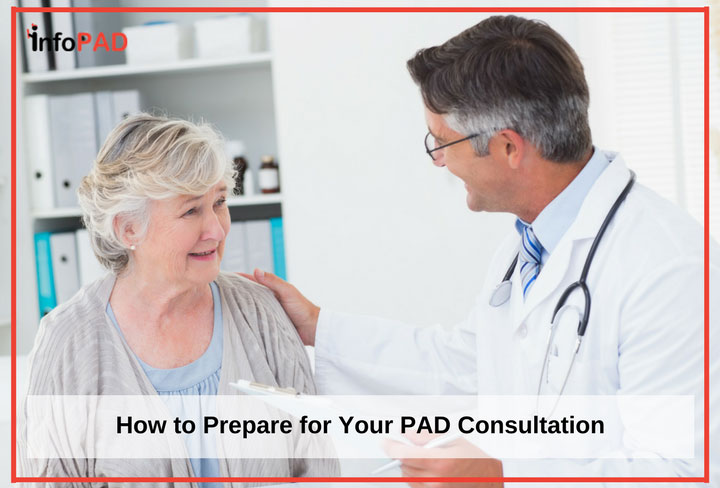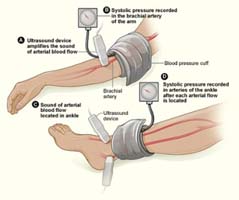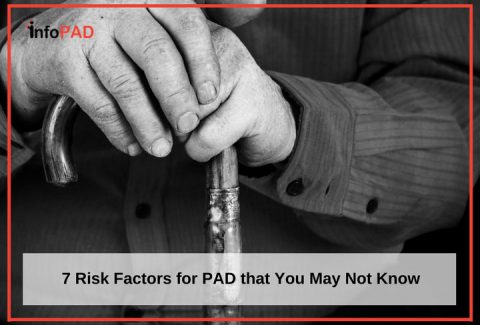
Peripheral artery disease (PAD) affects as many as 1 in 5 people over the age of 65. It is estimated that 8.5 million people in the United States have PAD; yet general population awareness is estimated at only 25%. [1] Because so often symptoms are attributed to the norms of growing older, many people suffering from possible PAD symptoms do not seek out professional help in alleviating their discomfort or pain. However, if you have been diagnosed with PAD, it is essential to seek guidance from a trained PAD specialist to establish the best treatment plan possible for your specific case. Visiting a PAD specialist for a consultation is the first step in determining what treatment options are available and best for you.
Searching for a PAD Specialist
- Ask for a referral from your primary care physician, podiatrist, or search for a PAD doctor online.
- PAD procedures can be performed in an outpatient center, not only in a hospital. Keep this in mind during your search.
- Ask the PAD specialist’s center if they are within your insurance network — you can also call your insurance company directly to check, too.
- Be certain that the physician you have selected for your consultation is a PAD specialist who is able to perform minimally invasive treatments for peripheral artery disease. These treatments may include:
- Angioplasty/Stent Placement
- Atherectomy
Once an appointment is made, there are a few preparatory steps you can take to help your consultation go smoothly and assist your physician in making an accurate diagnosis.
Find a Peripheral Artery Disease Specialist In Your Area
Information to Bring to Your PAD Consultation
There are several items and information you should be prepared to give to your doctor at your consultation. The following is information you should have readily available at your appointment.
You Should Bring:
A complete family history of diseases such as:
- Diabetes
- High Blood Pressure
- Chronic Kidney Disease
- Cardiovascular Disease
The presences of these diseases in your family history are important indicators for PAD.
A record of any previous treatment for PAD, or other blood vessel related conditions. Knowledge of past success or failure of an angioplasty, stent, atherectomy, or bypass graft surgery can help your PAD specialist immensely in determining the best course of treatment for current symptoms.
A list of symptoms experienced that may be related to PAD or other heart-related issues, including, but not limited to:
- Numbness
- Swelling
- Pain
- Shortness of breath
- Non-healing wounds on feet or toes
- Discoloration of legs or toenails
- Other changes to lower extremities
A list of any other medical conditions or diseases that you currently have or have had in the past.
A list of any medications currently being taken, whether or not they are for cardiovascular-related purposes. Be sure to include over-the-counter medications as well as any herbs or supplements you are taking.
A list of any tests performed that may assist your PAD specialist with the consultation. These can include:
- Blood tests
- Angiograms
- MRIs
- Ultrasounds
- CT scans
If the tests are recent, it may also save time and the costs of scheduling a repeated screening. Be sure to coordinate with your primary care physician, who will be able to provide the results of any previously conducted tests.
A list of lifestyle habits related to vascular health. Smoking is the single biggest lifestyle habit that increases your susceptibility for PAD. Poor diet, obesity, and sedentary lifestyle are also important risk factors.
RELATED: 11 Questions To Ask Your Doctor about Peripheral Artery Disease
Preparing for PAD Screening Tests
Blood Pressure Measurements
 An ankle-brachial index (ABI) or pulse volume recording (PVR) test can determine the existence or the severity of PAD, and requires strategic placement of blood pressure cuffs at the ankles and upper arms, so it may be easiest to wear loose-fitting clothing to provide easy access to all of your extremities.
An ankle-brachial index (ABI) or pulse volume recording (PVR) test can determine the existence or the severity of PAD, and requires strategic placement of blood pressure cuffs at the ankles and upper arms, so it may be easiest to wear loose-fitting clothing to provide easy access to all of your extremities.
Diagnostic Imaging Techniques
These tests are typically only done if the results of the ABI or PVR test determine the need. They involve the use of imaging equipment to visualize the blocked or narrowed artery. It may be necessary to inject a contrast dye into the blood vessel to help produce a clear image. Depending on the location of the blockage, it may be appropriate to wear short sleeves, shorts, or loose fitting clothing.
Cholesterol Tests
Lab work may be conducted in conjunction with imaging or blood pressure measurements to further evaluate the risk of developing PAD. Cholesterol tests, for example can be indicative of the condition of the arteries. Low amounts of good cholesterol combined with high levels of bad cholesterol and triglycerides are a risk factor for plaque buildup within the blood vessels. This test is a simple finger-stick, and often requires little preparation — your physician may require you to fast prior to your lab test.
Your doctor should be able to discuss PAD treatment options with you immediately following the screening tests, but may require additional time to review your complete medical history and identify the most appropriate treatment for your symptoms. Taking care in selecting a PAD specialist, compiling a careful medical background, and dressing comfortably for screening tests will help ensure the most accurate diagnosis and the most appropriate treatments to alleviate any discomfort and help you return to normal activities as quickly as possible.
Sources:
[1] http://www.cdc.gov/dhdsp/data_statistics/fact_sheets/docs/fs_pad.pdf



